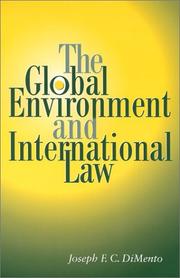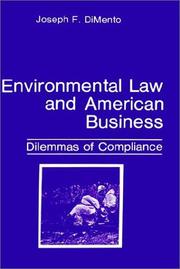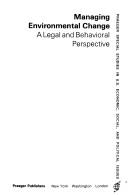| Listing 1 - 10 of 13 | << page >> |
Sort by
|

ISBN: 0292716249 Year: 2003 Publisher: Austin (Tex.) University of Texas Press
Abstract | Keywords | Export | Availability | Bookmark
 Loading...
Loading...Choose an application
- Reference Manager
- EndNote
- RefWorks (Direct export to RefWorks)

ISBN: 0306421682 Year: 1986 Publisher: New York
Abstract | Keywords | Export | Availability | Bookmark
 Loading...
Loading...Choose an application
- Reference Manager
- EndNote
- RefWorks (Direct export to RefWorks)

ISBN: 0275566404 Year: 1976 Publisher: New York
Abstract | Keywords | Export | Availability | Bookmark
 Loading...
Loading...Choose an application
- Reference Manager
- EndNote
- RefWorks (Direct export to RefWorks)

ISBN: 029279777X 0292716206 Year: 2003 Publisher: Austin, TX : University of Texas Press,
Abstract | Keywords | Export | Availability | Bookmark
 Loading...
Loading...Choose an application
- Reference Manager
- EndNote
- RefWorks (Direct export to RefWorks)
International law has become the key arena for protecting the global environment. Since the 1970s, literally hundreds of international treaties, protocols, conventions, and rules under customary law have been enacted to deal with such problems as global warming, biodiversity loss, and toxic pollution. Proponents of the legal approach to environmental protection have already achieved significant successes in such areas as saving endangered species, reducing pollution, and cleaning up whole regions, but skeptics point to ongoing environmental degradation to argue that international law is an ineffective tool for protecting the global environment. In this book, Joseph DiMento reviews the record of international efforts to use law to make our planet more livable. He looks at how law has been used successfully—often in highly innovative ways—to influence the environmental actions of governments, multinational corporations, and individuals. And he also assesses the failures of international law in order to make policy recommendations that could increase the effectiveness of environmental law. He concludes that a "supranational model" is not the preferred way to influence the actions of sovereign nations and that international environmental law has been and must continue to be a laboratory to test approaches to lawmaking and implementation for the global community.
Book
ISBN: 9780292797772 Year: 2021 Publisher: Austin
Abstract | Keywords | Export | Availability | Bookmark
 Loading...
Loading...Choose an application
- Reference Manager
- EndNote
- RefWorks (Direct export to RefWorks)
Book
ISBN: 1839983299 1839983302 1839983280 Year: 2022 Publisher: London, England ; New York, New York : Anthem Press,
Abstract | Keywords | Export | Availability | Bookmark
 Loading...
Loading...Choose an application
- Reference Manager
- EndNote
- RefWorks (Direct export to RefWorks)
"After presenting the Arctic and its present environmental health, Polar Shift is about how to sustain its richness, beauty, and local and global value. Its core describes programs specifically created to protect this region: the great inventory of law, policy, and civil society activity targeting sustainability of the region. We evaluate that treatment and present competing ideas of how it can be improved with specific recommendations"--
Environmental policy --- Environmental protection --- International cooperation. --- Arctic regions --- Environmental conditions.
Multi
ISBN: 9780292797772 Year: 2021 Publisher: Austin, Tex. University of Texas Press
Abstract | Keywords | Export | Availability | Bookmark
 Loading...
Loading...Choose an application
- Reference Manager
- EndNote
- RefWorks (Direct export to RefWorks)
Book
ISBN: 0262526778 0262018586 0262312387 1283938871 9780262312387 0262312395 9780262018586 9781283938877 Year: 2013 Publisher: Cambridge, Mass. : MIT Press,
Abstract | Keywords | Export | Availability | Bookmark
 Loading...
Loading...Choose an application
- Reference Manager
- EndNote
- RefWorks (Direct export to RefWorks)
The story of the evolution of the urban freeway, the competing visions that informed it, and the emerging alternatives for more sustainable urban transportation.Urban freeways often cut through the heart of a city, destroying neighborhoods, displacing residents, and reconfiguring street maps. These massive infrastructure projects, costing billions of dollars in transportation funds, have been shaped for the last half century by the ideas of highway engineers, urban planners, landscape architects, and architects--with highway engineers playing the leading role. In Changing Lanes, Joseph DiMento and Cliff Ellis describe the evolution of the urban freeway in the United States, from its rural parkway precursors through the construction of the interstate highway system to emerging alternatives for more sustainable urban transportation.DiMento and Ellis describe controversies that arose over urban freeway construction, focusing on three cases: Syracuse, which early on embraced freeways through its center; Los Angeles, which rejected some routes and then built I-105, the most expensive urban road of its time; and Memphis, which blocked the construction of I-40 through its core. Finally, they consider the emerging urban highway removal movement and other innovative efforts by cities to re-envision urban transportation.
Express highways -- Government policy -- United States -- History. --- Express highways -- United States -- History. --- Express highways --- Business & Economics --- Transportation Economics --- History --- Government policy --- History. --- Controlled access highways --- Express roads --- Expressways --- Freeways --- Interstate highways --- Interstates (Express highways) --- Limited access highways --- Motorways --- Superhighways --- Turnpikes (Modern) --- Roads --- Toll roads --- Government policy&delete& --- E-books --- ARCHITECTURE/Urban Design --- ENVIRONMENT/General --- URBANISM/Transportation
Book
ISBN: 0262322307 9780262322300 0262525879 9780262525879 9781306550413 1306550416 0262322315 9780262322294 Year: 2014 Publisher: Cambridge, Massachusetts : The MIT Press,
Abstract | Keywords | Export | Availability | Bookmark
 Loading...
Loading...Choose an application
- Reference Manager
- EndNote
- RefWorks (Direct export to RefWorks)
"This revised and updated collection of essays on climate change incorporates the latest scientific research and policy initiatives on the subject. It describes recent major legislative actions, analyzes alternative regulatory tools (including new uses of taxes and markets), offers increased coverage of China and other developing nations, discusses the role of social media in communicating about climate change, and provides updated assessments of the effects of climate change."--Provided by publisher.
Climatic changes --- Communication in science. --- History. --- Social aspects. --- Communication in research --- Science communication --- Science information --- Scientific communications --- Changes, Climatic --- Climate change --- Climate changes --- Climate variations --- Climatic change --- Climatic fluctuations --- Climatic variations --- Global climate changes --- Global climatic changes --- Environmental aspects --- Science --- Climatology --- Climate change mitigation --- Teleconnections (Climatology) --- Changes in climate --- Climate change science --- ENVIRONMENT/Environmental Politics & Policy --- Global environmental change

ISBN: 0262303418 1282098861 9786612098864 0262271753 1435603109 9780262271752 9781435603103 0262541939 9780262541930 026204241X 9780262042413 9780262541930 9780262042413 9780262303415 9781282098862 6612098864 Year: 2007 Publisher: Cambridge, Mass. : MIT Press,
Abstract | Keywords | Export | Availability | Bookmark
 Loading...
Loading...Choose an application
- Reference Manager
- EndNote
- RefWorks (Direct export to RefWorks)
Explains what science knows about climate change, how it will affect us, its impact on different areas, and what we can do about it.
Climatic changes --- Communication in science. --- Communication in research --- Science communication --- Science information --- Scientific communications --- Science --- Changes, Climatic --- Changes in climate --- Climate change --- Climate change science --- Climate changes --- Climate variations --- Climatic change --- Climatic fluctuations --- Climatic variations --- Global climate changes --- Global climatic changes --- Climatology --- Climate change mitigation --- Teleconnections (Climatology) --- History. --- Social aspects. --- Environmental aspects --- Global environmental change
| Listing 1 - 10 of 13 | << page >> |
Sort by
|

 Search
Search Feedback
Feedback About UniCat
About UniCat  Help
Help News
News